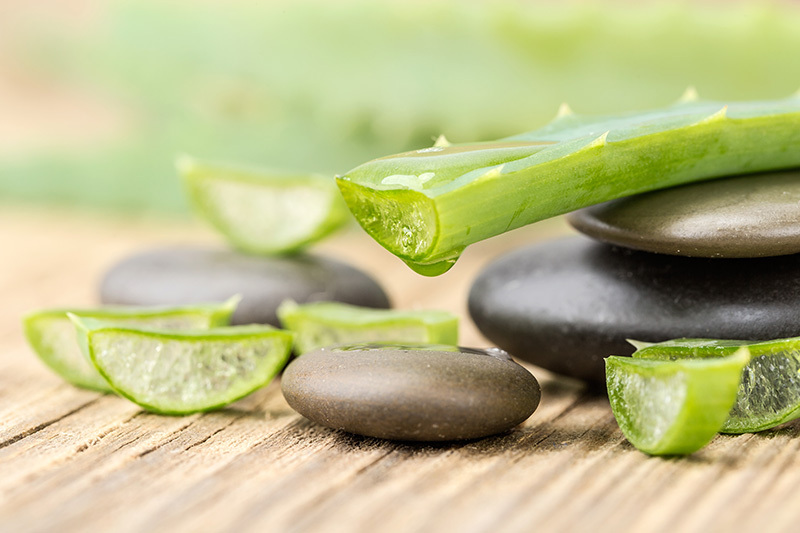Unravel 8 Unexpected Facts About the Mighty Sunflower
Posted on 02/06/2025
The sunflower, scientifically known as Helianthus annuus, isn't just a striking plant with vibrant yellow petals. This iconic flower has captured the hearts of gardeners, artists, and scientists for centuries. There's far more to the mighty sunflower than meets the eye. In this article, we will uncover 8 amazing sunflower facts that will change the way you see this sunny staple and reveal why it stands tall--literally and figuratively--in the botanical world. Let's dive into the world of sunflowers and discover their fascinating secrets!
1. Sunflowers Track the Sun's Movement -- But Not When Mature
Heliotropism: The Sun Chaser's Secret
One of the most unique sunflower facts is their ability to track the sun in a process called heliotropism. Young sunflowers face east at dawn and follow the sun's course throughout the day, ending up westward by evening. This daily dance helps maximize photosynthesis, stimulating stronger growth.
- Why do sunflowers track the sun? The flower's stems grow faster on the shaded side, leading the flower to tilt towards the sunlight.
- Aging brings change: As sunflowers mature, they settle facing east and stop following the sun. This stationary posture helps attract pollinators in the warming morning sun.
This heliotropic behavior is not just for show; it underlines how sunflowers are fine-tuned for survival and reproductive success.

2. The Tallest Sunflower Grows Higher Than a Two-Story House!
Champion of the Skies
If you think sunflowers are just garden blooms, think again. The sunflower holds its own in the record books as the tallest flowering plant of its kind.
- Guinness World Record: The tallest sunflower ever recorded soared to an incredible 30 feet 1 inch (9.17 meters). This sky-scraping plant was grown by Hans-Peter Schiffer in Germany in 2014.
- How do they get so tall? Sunflowers have robust cellular structures and rapid-growth capabilities, allowing them to race towards the sun, sometimes within just three months!
Next time you pass by a sunflower, remember you're looking at one of nature's most impressive natural towers--a true green giant.
3. Sunflowers Are Not Just One Flower
A Composite Marvel
A common misconception is that each sunflower is a single flower. In reality, each sunflower head is a composite, made up of hundreds--and sometimes thousands--of tiny individual flowers called florets.
- Disk florets: The dark center of a sunflower holds the reproductive "flowers" which later develop into seeds.
- Ray florets: The yellow "petals" are actually individual flowers designed to lure pollinators.
This complex construction makes the sunflower a botanical powerhouse, ensuring it attracts maximum pollination opportunities while producing the familiar seeds we love to snack on.
4. Sunflowers Can Clean Up Toxic Soil -- Nature's Environmental Hero
Phytoremediation in Action
When discussing surprising facts about sunflowers, their ability to act as natural soil purifiers is truly remarkable.
- Phytoremediation: Sunflowers are used in a process called phytoremediation, where they absorb hazardous heavy metals such as lead, arsenic, and uranium from contaminated soils through their roots.
- Global application: After the Chernobyl nuclear disaster, sunflowers were planted to remove radioactive toxins from the soil, earning them the title of environmental superstars.
Whether combating pollution in backyards or helping with disaster recovery, sunflowers play a key role in environmental cleanup efforts.
5. Sunflowers Can Be Used for More Than Just Seeds and Oil
A Versatile Powerhouse
It's well-known that sunflower seeds and sunflower oil are healthy additions to anyone's diet. However, their uses are surprisingly extensive:
- Edible petals: Sunflower petals can be added to salads for a colorful, slightly bittersweet flavor.
- Leafy greens: Young sunflower leaves are sometimes used as greens in salads or cooked dishes.
- Animal feed: Stalks and leaves are often used as silage for livestock, making sunflowers an eco-friendly feed source.
- Eco-crafts & dyes: The yellow pigment in petals can be used for natural fabric dyes, while stalks are sometimes fashioned into paper or even light furniture.
The mighty sunflower proves it's more than a pretty face or a tasty snack--it's a multi-purpose plant with an astonishing range of applications.
6. Sunflower Seeds Have a Fascinating Mathematical Pattern
The Fibonacci Connection
You might have noticed the mesmerizing spiral pattern at the center of the sunflower. This isn't just an aesthetic wonder--it's a brilliant example of mathematics in nature.
- Fibonacci sequence: The florets in the sunflower's center are arranged in spirals that follow the famous Fibonacci sequence (1, 1, 2, 3, 5, 8, 13, etc.), which is closely linked with the golden ratio.
- Maximized seed packing: This optimized spiral formation enables the sunflower to fit the maximum number of seeds without gaps, ensuring the most efficient use of space.
- Extraordinary aesthetics: The resulting pattern is not only functional but also beautiful--a striking example of how mathematics shapes the natural world.
With every glance at a sunflower, you're glimpsing nature's own mathematics at work--a true joy for botanists and mathematicians alike!
7. Sunflowers Have Served as an Inspiration Across Cultures and History
A Symbol of Hope, Devotion, and Pride
Sunflowers have played a profound role in human history and culture, stretching well beyond the fields where they grow.
- Native American heritage: Indigenous peoples of North America cultivated sunflowers over 4,500 years ago, utilizing them for food, dye, and medicine.
- Van Gogh's muse: The sunflower is immortalized in art, most famously by Vincent van Gogh, whose Sunflowers paintings are world-renowned.
- Universal symbolism: Sunflowers have come to represent warmth, happiness, loyalty, and longevity. In many cultures, they are associated with spiritual faith, good fortune, and even political movements.
Whether you're an artist, a gardener, or a dreamer, the sunflower's strong stalk and radiant face make it a global symbol of resilience and brilliance.
8. Sunflowers Hold Surprising Culinary Health Benefits
A Superfood That Packs a Punch
While you may enjoy roasted sunflower seeds as a snack, there's much more to the plant's nutritional prowess:
- Rich in nutrients: Sunflower seeds are a top source of vitamin E, magnesium, selenium, and polyunsaturated fats that support brain, heart, and skin health.
- High in protein: Packed with plant-based protein, sunflower seeds are a popular nutrition boost for vegetarians and athletes.
- Antioxidant properties: The seeds are loaded with antioxidants that help reduce inflammation and protect cells from damage.
Including sunflowers or their seeds in your diet isn't just about flavor--it's about harnessing a host of health benefits from one of nature's most colorful superfoods.
Frequently Asked Questions About Sunflowers
Why do sunflowers always face east?
Mature sunflowers face east to warm up quickly in the morning sun, which attracts pollinators, particularly bees, by providing a warmer landing spot.
Can you grow sunflowers anywhere?
Sunflowers are remarkably adaptable. While they prefer full sun and well-draining soil, these hardy plants can tolerate a variety of climates and soils.
How long do sunflowers take to bloom?
Typically, sunflowers take 70 to 100 days to go from seed to bloom, with giant varieties requiring a slightly longer growing season.
Are sunflowers annual or perennial?
Most common varieties, like Helianthus annuus, are annuals. However, perennial species such as Helianthus maximiliani exist and can come back year after year.

Conclusion: The Sun-Soaked Legacy of the Mighty Sunflower
From tracking the sun to starring in artistic masterpieces, sunflowers stand as a testament to the wonder and resilience of the natural world. These surprising and unexpected facts about the sunflower highlight how this iconic plant is much more than just a pretty face--it's an environmental savior, a cultural icon, a culinary delight, and a triumph of botanical engineering.
Next time you spot a sunflower--towering in a field, peeking out from a garden, or featured in a painting--pause to appreciate the hidden depth and remarkable versatility behind its golden smile. The world of sunflowers is truly worth unraveling.
Key Takeaways: 8 Unexpected Facts About the Mighty Sunflower
- Sunflowers practice heliotropism as youngsters, tracking the sun daily.
- They can reach world-beating heights above 9 meters.
- Each "flower" is a composite of hundreds or thousands of tiny florets.
- They clean up toxic soils through phytoremediation.
- All parts of the sunflower have surprising culinary and practical uses.
- The spirals in their seed patterns mirror the Fibonacci sequence.
- Sunflowers inspire cultures, artists, and movements worldwide.
- The seeds are nutritional powerhouses offering many health benefits.
Uncover more about the sunflower, and you'll find it's sowing seeds of wonder everywhere!
Latest Posts
Where to Find Unique Wildflowers in [AREA] This Spring
Essentials for Making Your Poinsettias Last
Crafting a Holistic Orchid Care Plan
3 foolproof methods to preserve your flowers
Your Birth Flower's Insights: What It Tells About You and Your Journey





